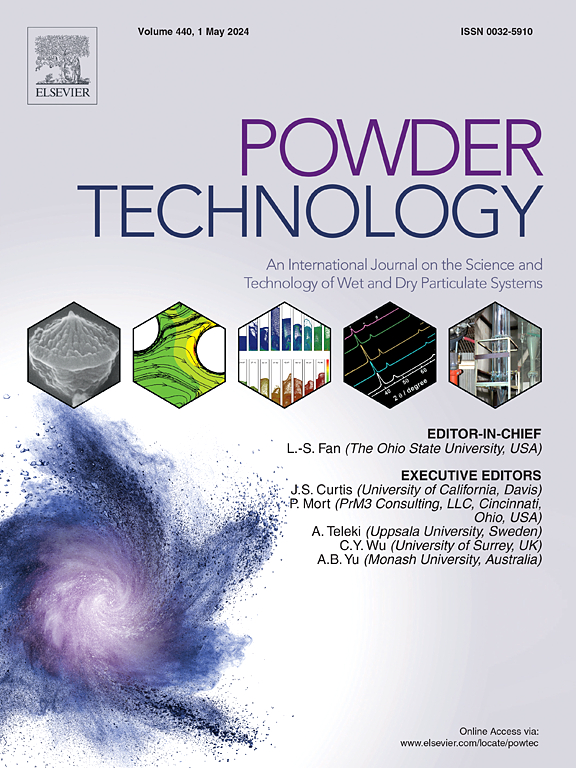Research on bubble-particle tangential detachment behavior: Experiments and models
IF 4.5
2区 工程技术
Q2 ENGINEERING, CHEMICAL
引用次数: 0
Abstract
Bubble-particle detachment is an important stage in mineral flotation process, and it restricts the final recovery of flotation. Tangential detachment is a typical way of bubble-particle detachment. Compared with normal detachment, the mechanism of bubble-particle tangential detachment is more complex. In recent years, it has been recognized that contact angle distribution and contact angle hysteresis have important effects on tangential detachment process. However, the behavior mechanism of tangential detachment process based on theoretical derivation and experimental verification is not clear. In this paper, several kinds of traditional contact angle distribution models are discussed and derived, and their shortcomings are analyzed. Based on the test results of contact angle and formula derivation, a more suitable contact angle relationship model with the azimuth angle, forward and backward contact angle is obtained. Finally, a tangential capillary force model is established based on the deduced contact angle distribution model, and the reliability of the model is verified by comparing the actual tangential capillary force maximum value with the calculated value of the model under corresponding conditions, to realize the quantitative analysis of the behavior of the bubble-particle tangential detachment process.

气泡-颗粒切向分离行为研究:实验与模型
气泡颗粒脱离是矿物浮选过程中的一个重要阶段,它制约着浮选的最终回收率。切向分离是泡粒分离的一种典型方式。与正常剥离相比,泡粒切向剥离的机理更为复杂。近年来,人们认识到接触角分布和接触角滞后对切向剥离过程有重要影响。然而,基于理论推导和实验验证的切向剥离过程的行为机制尚不清楚。本文讨论和推导了几种传统的接触角分布模型,并分析了它们的不足。根据接触角的试验结果和公式推导,得到了较为合适的方位角、前后接触角的接触角关系模型。最后,基于推导出的接触角分布模型,建立了切向毛细力模型,并将实际切向毛细力最大值与相应条件下模型计算值进行对比,验证了模型的可靠性,实现了对气泡-颗粒切向分离过程行为的定量分析。
本文章由计算机程序翻译,如有差异,请以英文原文为准。
求助全文
约1分钟内获得全文
求助全文
来源期刊

Powder Technology
工程技术-工程:化工
CiteScore
9.90
自引率
15.40%
发文量
1047
审稿时长
46 days
期刊介绍:
Powder Technology is an International Journal on the Science and Technology of Wet and Dry Particulate Systems. Powder Technology publishes papers on all aspects of the formation of particles and their characterisation and on the study of systems containing particulate solids. No limitation is imposed on the size of the particles, which may range from nanometre scale, as in pigments or aerosols, to that of mined or quarried materials. The following list of topics is not intended to be comprehensive, but rather to indicate typical subjects which fall within the scope of the journal's interests:
Formation and synthesis of particles by precipitation and other methods.
Modification of particles by agglomeration, coating, comminution and attrition.
Characterisation of the size, shape, surface area, pore structure and strength of particles and agglomerates (including the origins and effects of inter particle forces).
Packing, failure, flow and permeability of assemblies of particles.
Particle-particle interactions and suspension rheology.
Handling and processing operations such as slurry flow, fluidization, pneumatic conveying.
Interactions between particles and their environment, including delivery of particulate products to the body.
Applications of particle technology in production of pharmaceuticals, chemicals, foods, pigments, structural, and functional materials and in environmental and energy related matters.
For materials-oriented contributions we are looking for articles revealing the effect of particle/powder characteristics (size, morphology and composition, in that order) on material performance or functionality and, ideally, comparison to any industrial standard.
 求助内容:
求助内容: 应助结果提醒方式:
应助结果提醒方式:


